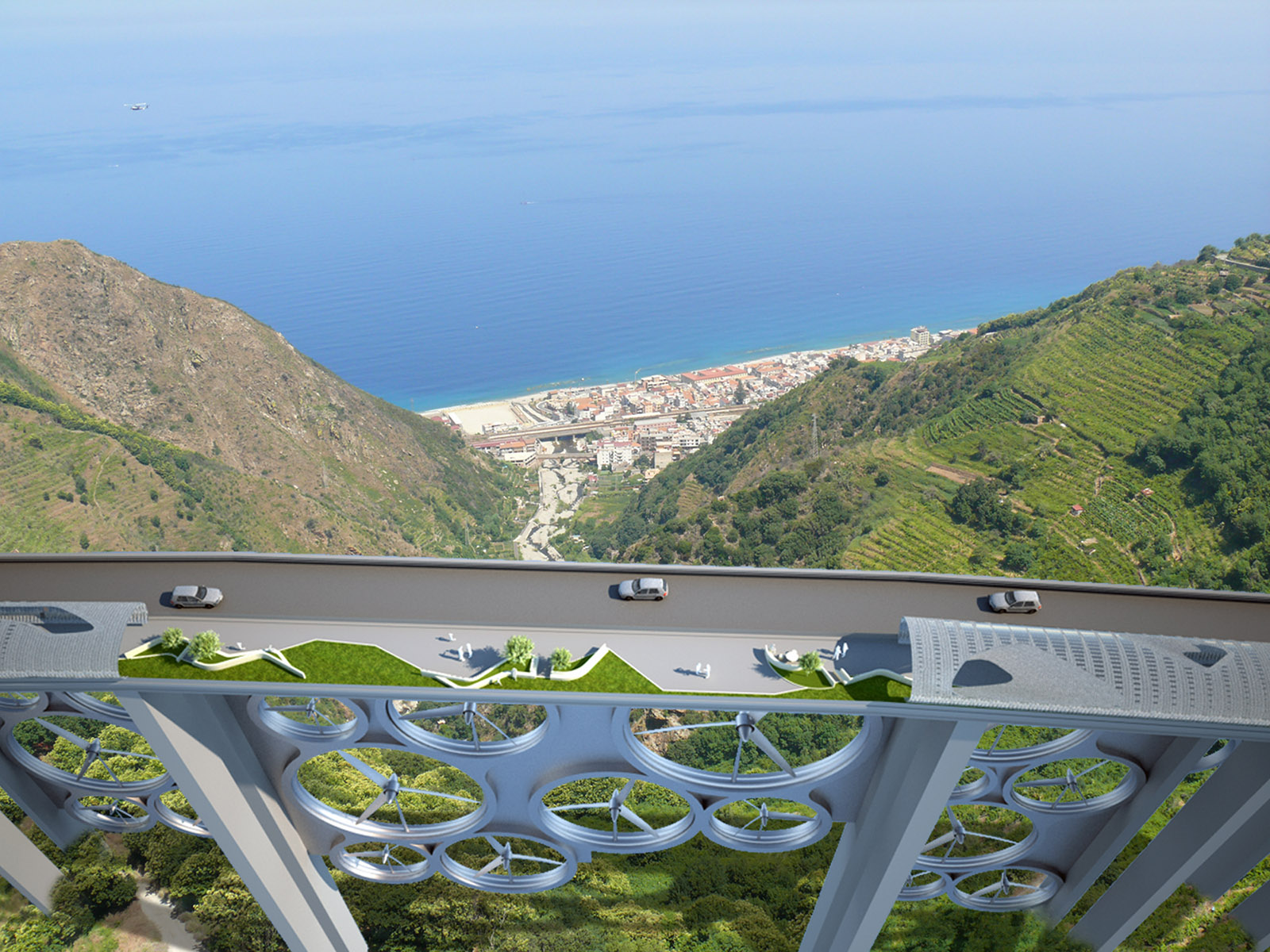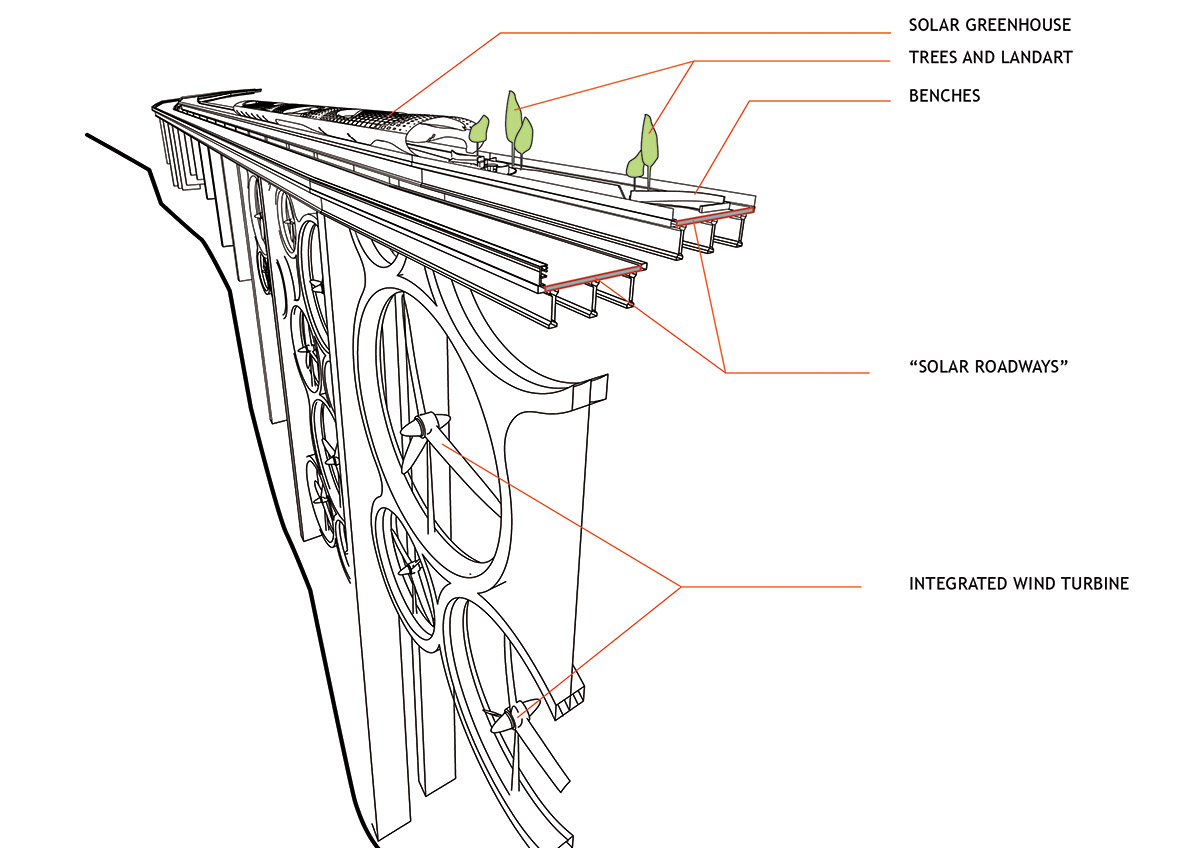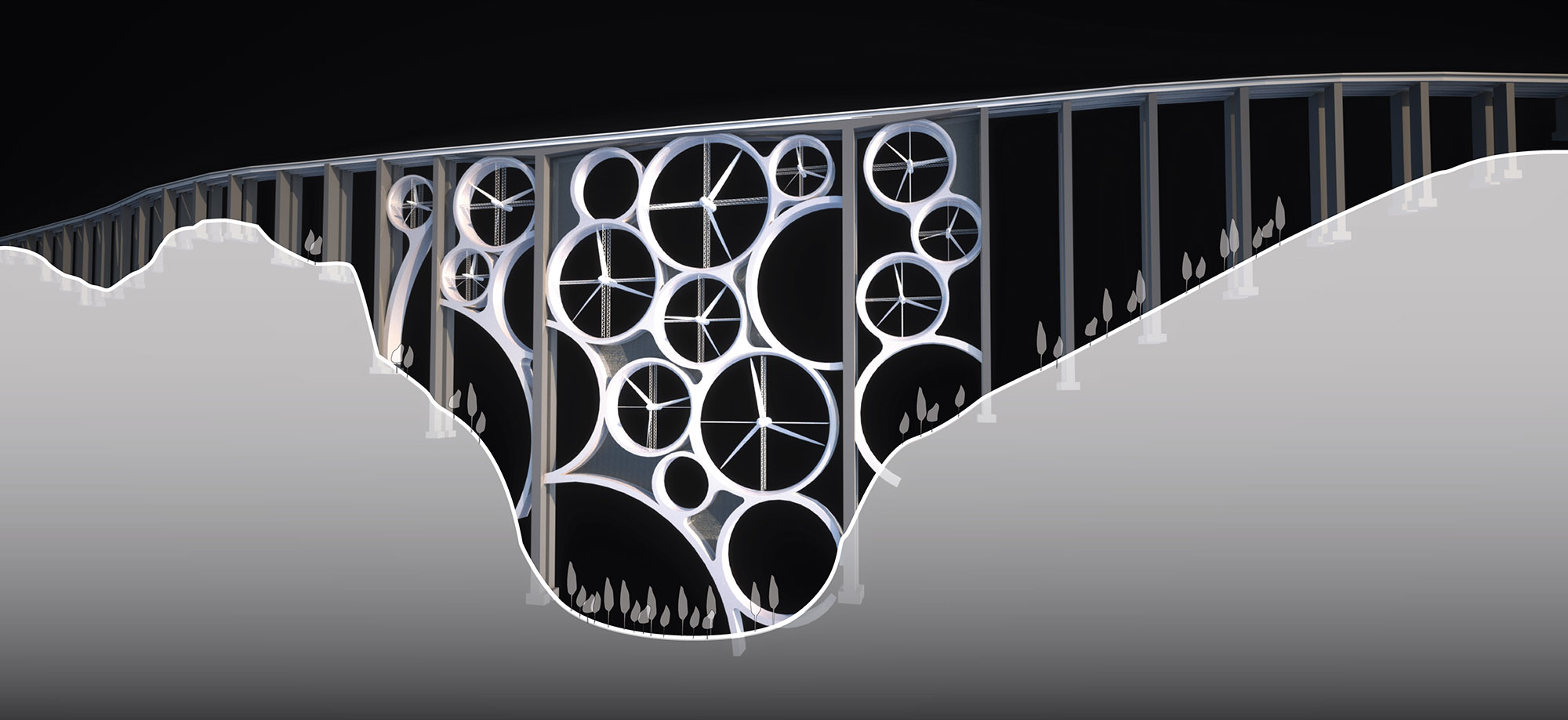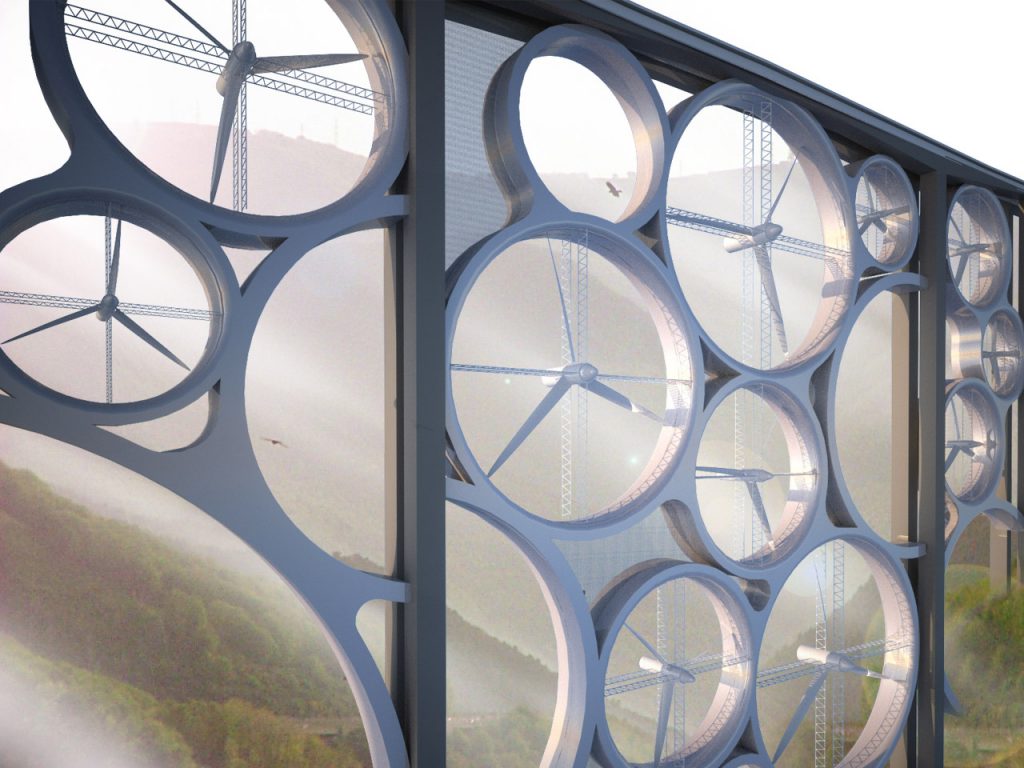SOLAR WIND PROJECT
Solar Wind is a hybrid (wind/solar) system composed by a wind energy plant integrated with the existing structure of the “Costaviola” viaduct between Scilla and Bagnara and by a carriageable surface covered with photovoltaic panels. Almost ten kilometres of the A3 motorway (from Salerno to Reggio Calabria), between the municipalities of Scilla and Bagnara, will be dismissed after the construction of a new route. This route will be built mainly in tunnels, in response to the need of a safety intervention and a functional modernisation of the present road, as well as taking into account the needs of the controversial project of the Messina Channel crossing. The original route was mainly built between the 60s and 70s and

The International competition "Parco Solare Sud" held by the Calabria Region for the requalification of the Scilla-Bagnara route within the Salerno-Reggio Calabria motorway, was the occasion to reconsider the function of the existing infrastructures: the viaduct, other than being just a transport mean would have an even more significant duty producing energy. The winds that constantly blow through the valleys where the viaducts stand, would be used to produce clean energy: the empty spaces between the pylons that hold the carriageway would be filled with an organic and attractive element featuring wind turbines. This idea follows the intention to create a new concept of wind and photovoltaic fields, which inevitably have a deep visual impact on the natural landscape. Therefore, the integration of the turbines within an existing structure allows avoiding the exploitation of natural areas that are still immaculate. Furthermore, as the chapter regarding structural feasibility will explain in detail, the project would also allow the viaduct to improve from a static point of view. The "Solar Wind" project, in addition to the integration of the wind turbines, includes solar panels and tapping elements along the road surface. The carriageable road surface will be substituted by a technological type of asphalt (Solar Roadways, produced in USA), which is covered in photovoltaic cells, while the internal carriageway will become a completely pedestrian route, enriched by equipped panoramic spots and solar greenhouses. Public and private sector should ideally manage the route together. Private companies (energy and trading) should take on all costs and benefits and public agencies (Region and ANAS) should host them. Such virtual scenario highlights the importance of social issues and suggest a different use of the route, as more than a merely public system of "common spaces", because private and personal histories are able to produce important sharing occasions. The functions of the route are intentionally not very detailed, in order to allow the installation a certain grade of fortuity, which makes architecture very similar to life.

It must be emphasised that the new structure, which will be built on the piers of the existing structure, will contribute to the static nature of the old viaduct, providing static and seismic adjustments which the viaduct inevitably needs after so many years, no matter how well built. In order to perform an evaluation of the wind energy plant's profitability, in terms of annual production of electric energy, the costs of the project were roughly calculated and separated (cost of structure and cost of turbines). The steal structure, which has a total weight of 8.300-8.500 tons circa, would involve an investment of around 25 million Euros. The wind turbines, considering a 15 MW plant and a cost of 1.000 Euro/kW, would involve a cost of around 15 million Euros. The overall cost would therefore fall within the budget (almost 40 million Euros) considered for the demolition of the viaducts to achieve environmental retrieval. The construction of similar implants on other viaducts of the dismissed route between Bagnara Calabra and Scilla could also be scheduled subsequently, involving the research of other financial resources. It must be either emphasised that, considering the present development of the renewable energies' sector, a wind energy plant is a safe economic investment, in addition to its important environmental value. In order to evaluate the payback period (when an equivalence between cash outflows and inflows occurs) it is necessary to figure a possible profit, which can be determined depending on: > approximate price of energy paid by the National company for energy acquisition (around 0,17 €); > average annual costs for maintenance (around 0,007 €/kWh). Sectoral economic studies outlined that a wind turbine, in 20 years time, would produce an average financial profit of over 3.2% per year, in times of favourable selling conditions, while payback period usually varies between 8 and 10 years.






